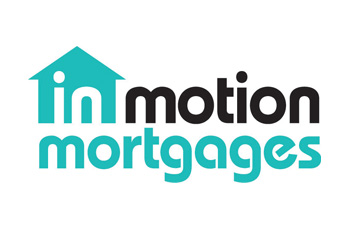A Comprehensive Guide to Equity Release Mortgages in the Region
A Comprehensive Guide to Equity Release Mortgages in the Region
Blog Article
Discovering the Different Kinds of Equity Release Mortgages Available Today
Equity Release home loans existing different options for house owners aged 55 and over. equity release mortgages. These financial items accommodate various requirements and choices, enabling people to gain access to funds from their residential or commercial property. From life time mortgages to common gratitude home mortgages, each kind uses unique benefits. Recognizing these choices is important for making educated choices. What variables should one take into consideration when choosing one of the most suitable equity Release strategy? The details that comply with may drop light on this vital subject
Understanding Equity Release Mortgages
Equity Release home loans give house owners, usually those aged 55 and over, with a means to access the value linked up in their home without requiring to market it. This financial alternative allows individuals to transform a section of their home equity into cash, which can be used for numerous objectives, such as home renovations, repaying debts, or financing retirement.Equity Release can take various forms, but it basically entails borrowing against the value of the home while preserving ownership. Property owners can select to obtain a lump sum or a collection of smaller sized payments, depending on their financial requirements and preferences.Additionally, the amount readily available for Release is influenced by the residential or commercial property's worth, the house owner's age, and particular lender standards. On the whole, comprehending equity Release mortgages is essential for homeowners to make educated decisions about touching right into their home's equity while thinking about the long-lasting implications.
Lifetime Mortgages
Life time home mortgages represent one of the most popular types of equity Release. This financial item enables house owners, generally aged 55 or older, to obtain against the value of their home while keeping possession. The lending, which is safeguarded versus the home, accumulates passion gradually however does not call for month-to-month settlements. Instead, the funding and accumulated passion are repaid when the home owner passes away or relocates into long-lasting care.Lifetime home mortgages offer flexibility, as consumers can pick to receive a swelling sum or opt for a drawdown center, accessing funds as needed. Importantly, several plans included a no-negative-equity warranty, making certain that consumers will never owe greater than the worth of their home. This attribute offers tranquility of mind, allowing people to enjoy their retired life without the worry of diminishing their estate. In general, lifetime mortgages work as a sensible option for those seeking monetary support in later life.
Home Reversion Program

Drawdown Life Time Mortgages
While lots of property owners seek methods to access their wealth, drawdown lifetime mortgages offer an adaptable option that enables people to Release funds gradually. This type of equity Release mortgage makes it possible for house owners to borrow versus the value of their building while maintaining ownership. Unlike typical lifetime home mortgages, drawdown strategies allow borrowers to access a portion of their equity upfront and withdraw additional funds as needed, as much as a fixed limit.This attribute can be specifically advantageous for those who want to manage their financial resources very carefully, as it minimizes rate of interest build-up by only charging rate of interest on the amounts attracted. Furthermore, drawdown lifetime mortgages often feature a "no adverse equity assurance," making sure that debtors will never ever owe even more than their home's worth. This choice matches retired people who desire financial protection and adaptability, allowing them to satisfy unanticipated expenditures or preserve their lifestyle without having to market their building.
Improved Life Time Mortgages
Boosted Life time Home loans provide distinct advantages for eligible property owners seeking to Release equity from their homes. Recognizing the eligibility criteria is necessary, as it determines who can gain from these specialized fundings. Nonetheless, it is also important to review the prospective drawbacks connected with enhanced choices, making sure an all-around point of view on their usage.
Eligibility Requirements Described
Understanding the eligibility requirements for Improved Life time Mortgages is vital for potential candidates seeking to access the equity in their homes. Usually, applicants should be aged 55 or older, as this age demand is typical in the equity Release market. Home owners must have a property valued at a minimal threshold, which can differ by loan provider. Significantly, the building must be their main house and in good condition. Lenders frequently assess the home owner's wellness condition, as specific health problems might enhance qualification and advantages. In addition, candidates need to not have existing significant financial obligations protected versus the residential or commercial property. Satisfying these requirements allows individuals to explore Boosted Lifetime Home mortgages as a viable choice for accessing funds bound in their homes.
Benefits of Boosted Home Mortgages
After clearing up the eligibility criteria, useful content it comes to be apparent that Enhanced Life time Mortgages use several significant advantages for house owners seeking to utilize their property equity. Primarily, they give access to a larger car loan quantity compared to typical lifetime mortgages, benefiting those with health problems or age-related aspects that enhance their life span risk. This boosted borrowing capability enables property owners to satisfy different financial demands, such as home renovations or retired life costs. Additionally, these home mortgages normally feature adaptable repayment options, making it possible for customers to manage their finances extra properly. The no-negative-equity warranty further assures that home owners will never ever owe even more than their building's value, offering peace of mind. In General, Enhanced Lifetime Home mortgages offer a compelling choice for qualified property owners looking for economic services.
Prospective Disadvantages Thought About
While Improved Lifetime Home mortgages use many benefits, prospective downsides require mindful factor to consider. One considerable worry is the influence on inheritance; the equity launched lowers the value of the estate delegated recipients. Furthermore, these additional reading mortgages can accumulate substantial passion over time, resulting in a considerable financial obligation that might go beyond the original financing quantity. There might also be limitations on residential or commercial property modifications or rental, restricting property owners' adaptability. Enhanced products typically need particular wellness conditions, implying not all homeowners will qualify. Managing the costs and costs linked with these home mortgages can be intricate, potentially leading to unanticipated costs. As a result, individuals ought to thoroughly assess their scenario and get in touch with economic advisors prior to continuing.
Shared Recognition Home Mortgages
Shared Admiration Mortgages represent an one-of-a-kind monetary arrangement that permits homeowners to access equity while sharing future residential or commercial property worth enhances with the loan provider. This technique provides prospective advantages such as decreased monthly payments, but it additionally features disadvantages that need to be carefully thought about. Recognizing the qualification requirements is crucial for those interested in this alternative.
Concept Overview
Equity Release home loans, especially in the type of common gratitude mortgages, provide homeowners a special economic remedy that allows them to accessibility funds by leveraging the value of their residential property. In this plan, a loan provider offers a financing to the home owner, which is usually paid off with a share of the residential property's future gratitude in value. This suggests that when the homeowner sells the property or passes away, the lending institution receives a percentage of the raised value, instead of just the initial loan quantity. Shared admiration mortgages can be appealing for those wanting to supplement their revenue or financing substantial costs while preserving ownership of their home. Nonetheless, the financial implications of common gratitude have to be carefully taken into consideration by potential borrowers.
Downsides and benefits
Although common appreciation mortgages can give substantial monetary benefits, they also include notable drawbacks that potential customers should consider. These home mortgages permit home owners to accessibility equity in their residential properties while sharing a part of any type of future admiration with the lending institution. This plan can be beneficial during times of rising residential property values, using considerable funds without monthly payments. The major disadvantage is the possible loss of equity; house owners may end up with appreciably reduced inheritance for beneficiaries. Furthermore, the complexity of the terms can bring about misunderstandings relating to settlement responsibilities and the percent of gratitude owed. As a result, it is necessary for borrowers to consider these aspects meticulously before devoting to a shared appreciation home loan.
Qualification Demands
What standards must home owners satisfy to receive a shared admiration mortgage? Mostly, candidates should go to least 55 years of ages, guaranteeing they are within the target demographic for equity Release items. In addition, the property needs to be their primary home and usually valued over a defined minimum limit, usually around ? 100,000. Lenders likewise analyze the house owner's financial circumstances, consisting of earnings and exceptional debts, to identify they can handle the mortgage properly. Significantly, the building needs to remain in excellent problem and totally free from considerable legal encumbrances. House owners must likewise have a clear understanding of the terms, consisting of just how admiration will be shared with the loan provider upon sale or transfer of the residential or commercial property, as this impacts overall returns.
Selecting the Right Equity Release Choice

Often Asked Concerns
What Age Do I Required to Be for Equity Release?
The age requirement for equity Release normally begins at 55 for most strategies. However, some companies might offer alternatives for those aged 60 and above, showing varying terms based upon private conditions and loan provider policies.
Will Equity Release Influence My Inheritance?
Equity Release hop over to these guys can impact inheritance, as the amount obtained plus rate of interest lowers the estate's worth. Beneficiaries might obtain less than expected, relying on the residential or commercial property's admiration and the complete financial obligation at the time of passing.
Can I Relocate Residence With Equity Release?
The inquiry of moving house with equity Release occurs often. Typically, people can transfer their equity Release plan to a brand-new home, but details conditions may apply, calling for assessment with the loan provider for support.
Are There Costs Related To Equity Release Mortgages?
Fees connected with equity Release home loans can include arrangement costs, valuation fees, and lawful costs. Additionally, there may be early settlement costs, which can affect the total price and monetary ramifications for the consumer.
Just How Does Equity Release Effect My Tax Obligation Circumstance?
Equity Release can impact one's tax circumstance by possibly increasing gross income, as launched funds are thought about resources. Nevertheless, it normally does not sustain instant tax obligation obligations, making it important to consult an economic advisor for individualized support.
Final thought
In recap, the selection of equity Release home loans readily available today provides home owners aged 55 and over multiple pathways to access their residential property's worth - equity release mortgages. Whether going with a life time mortgage, home reversion strategy, or various other choices, each alternative presents distinct benefits tailored to private economic needs. Careful consideration and consultation with an economic expert are necessary to assure the picked equity Release option lines up with financial circumstances and individual objectives, inevitably promoting educated decision-making for a secure financial future. Equity Release home loans existing numerous alternatives for house owners aged 55 and over. Equity Release home loans offer house owners, usually those aged 55 and over, with a way to access the value linked up in their building without requiring to sell it. Enhanced Life time Home loans offer distinct benefits for qualified house owners looking for to Release equity from their properties. Equity Release mortgages, particularly in the form of shared appreciation home mortgages, use home owners an unique economic option that allows them to gain access to funds by leveraging the worth of their building. In recap, the variety of equity Release home loans available today uses property owners aged 55 and over numerous paths to access their home's worth
Report this page